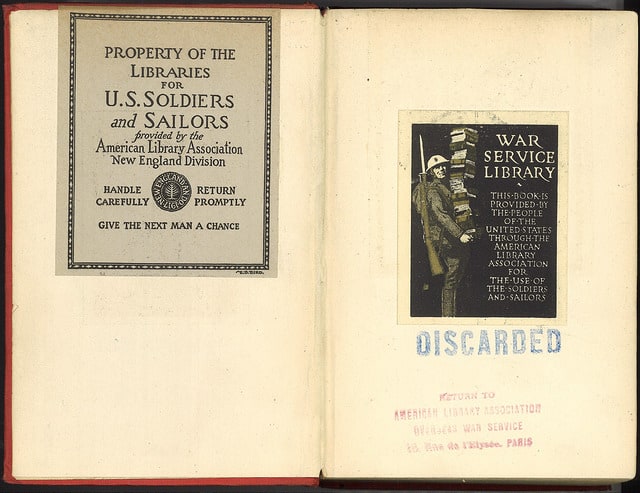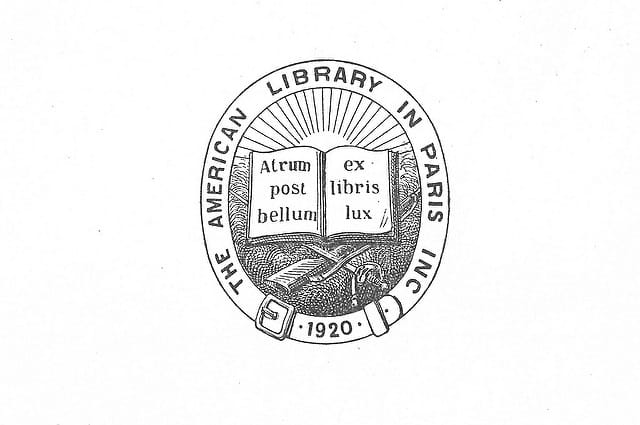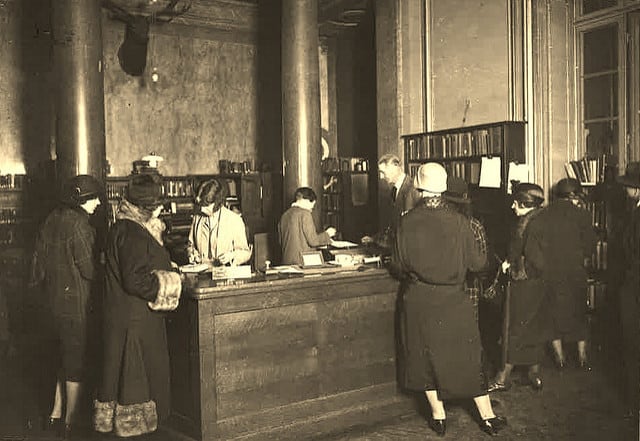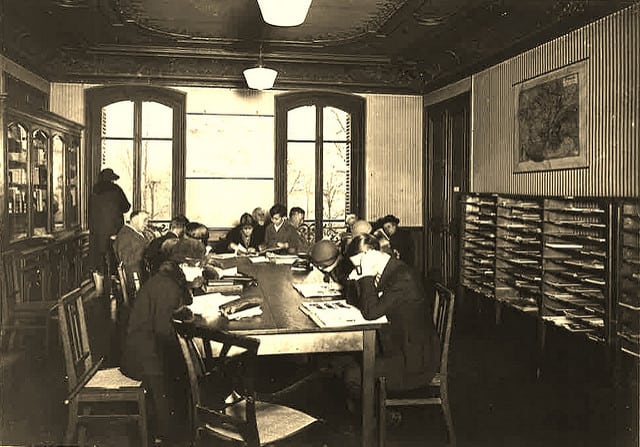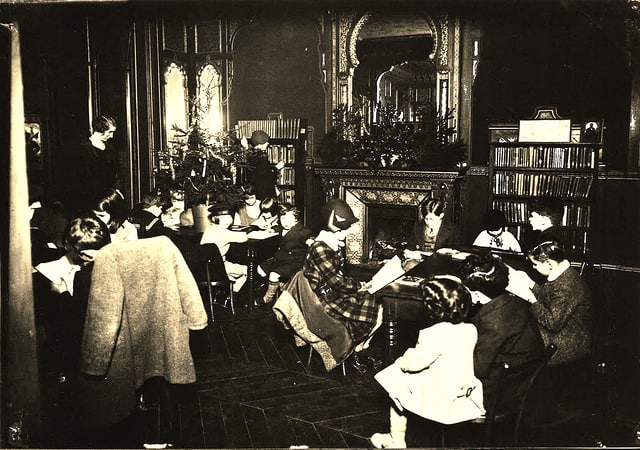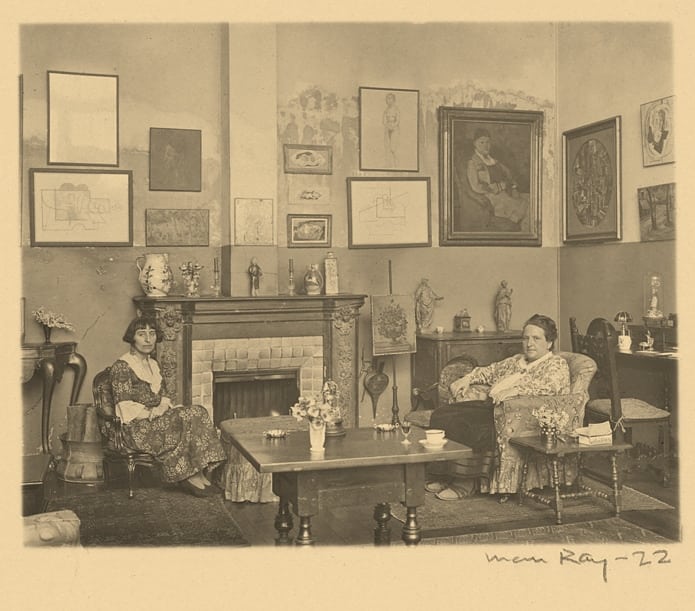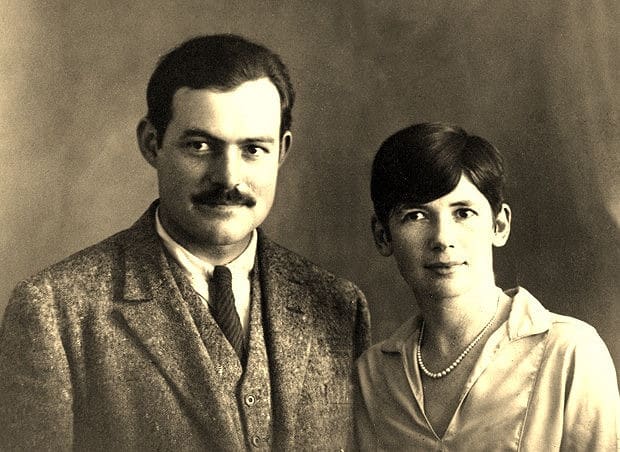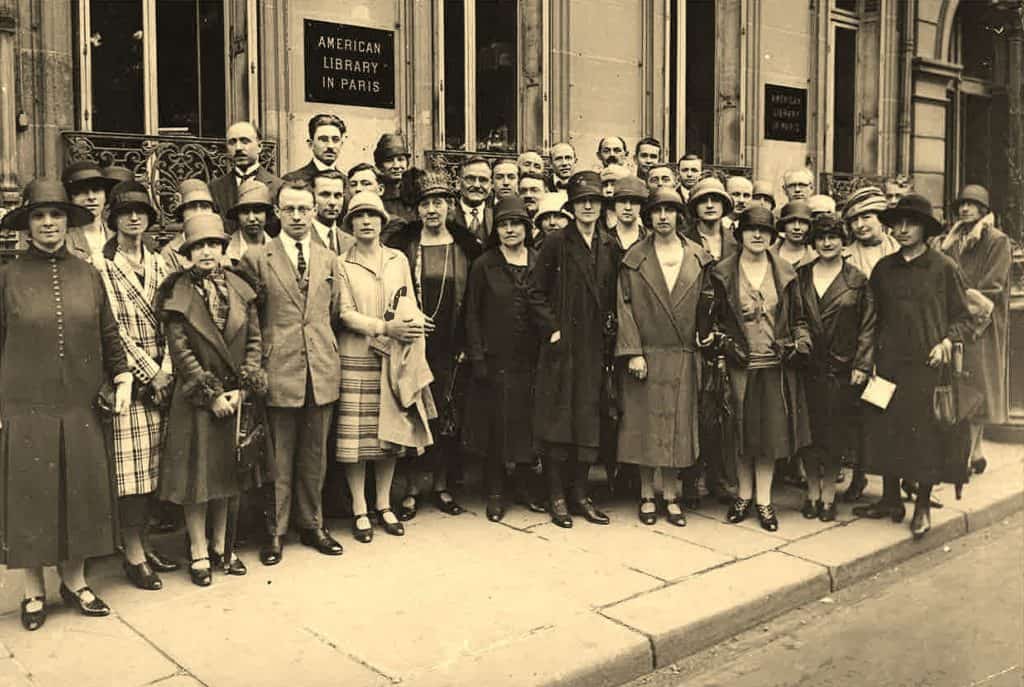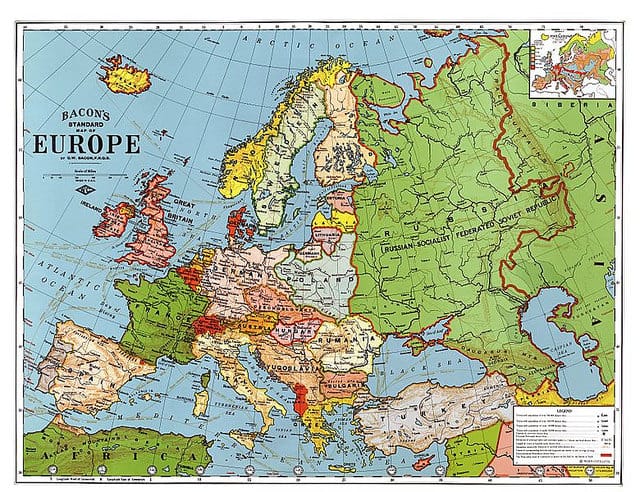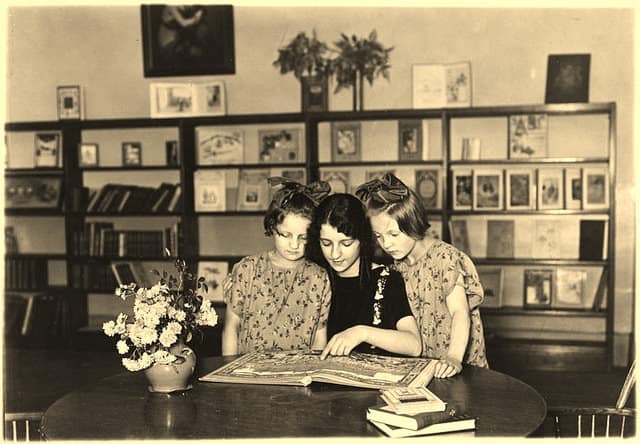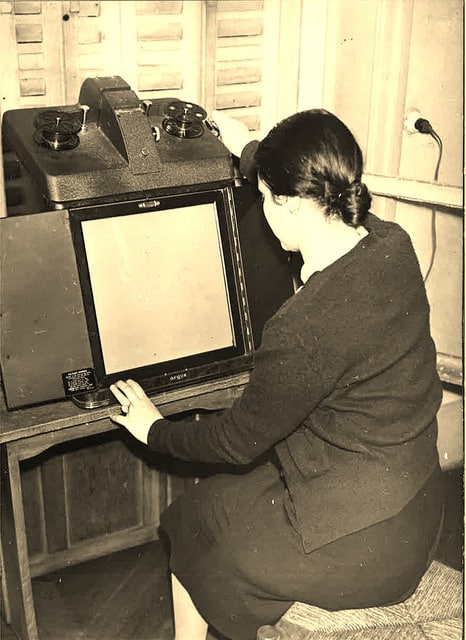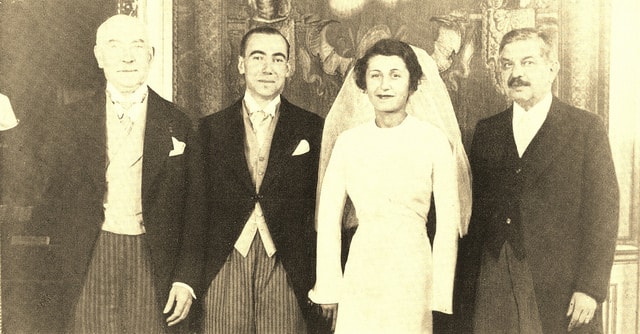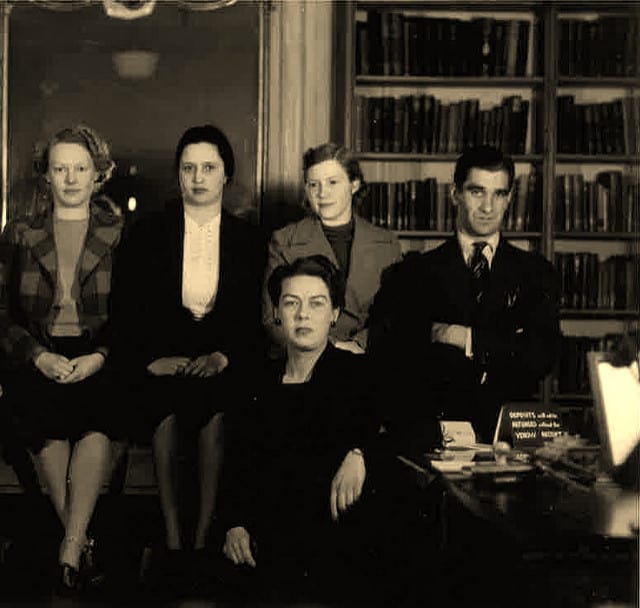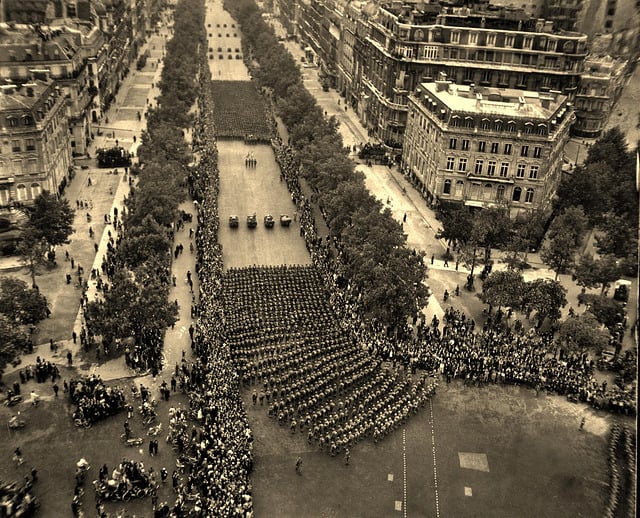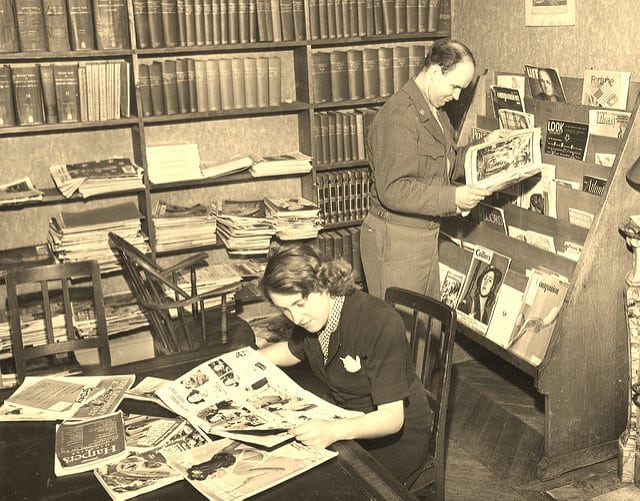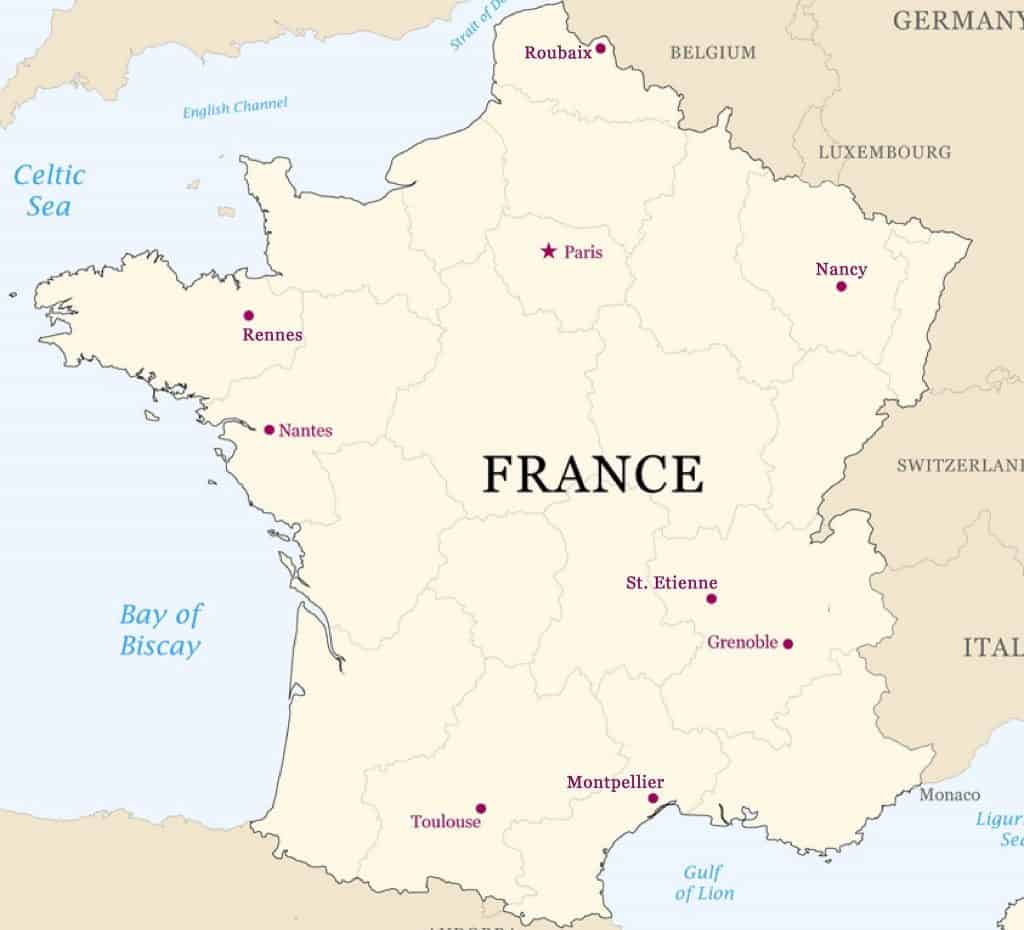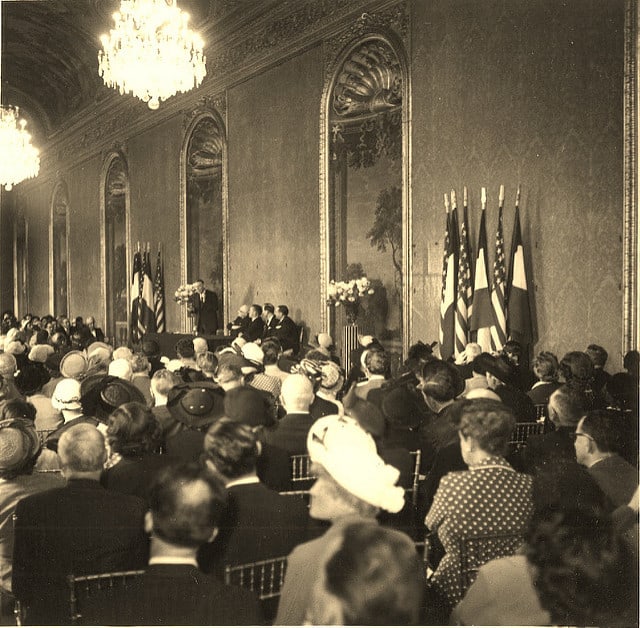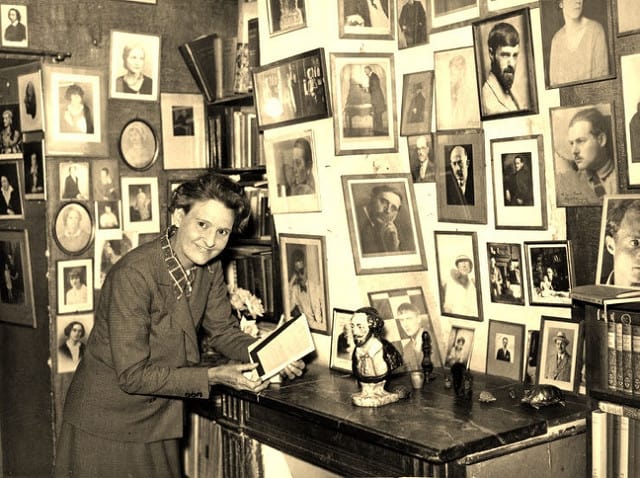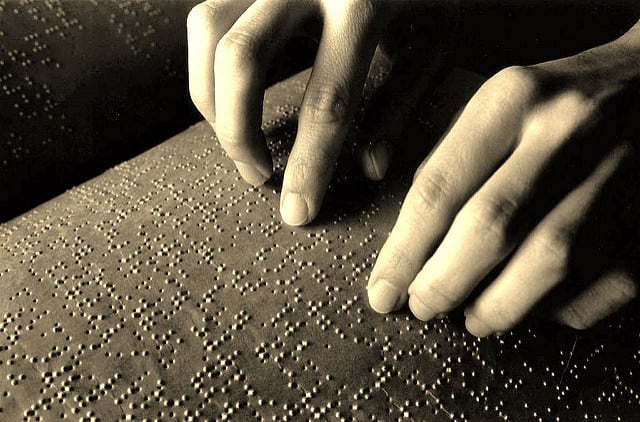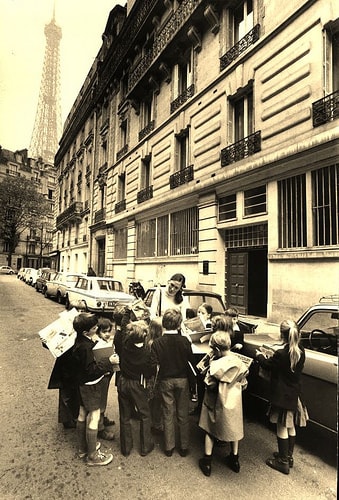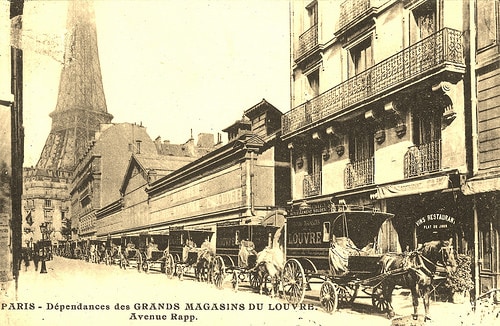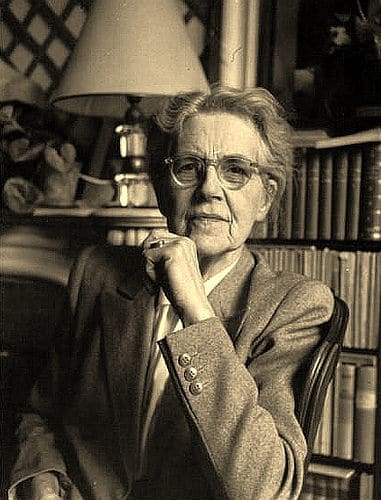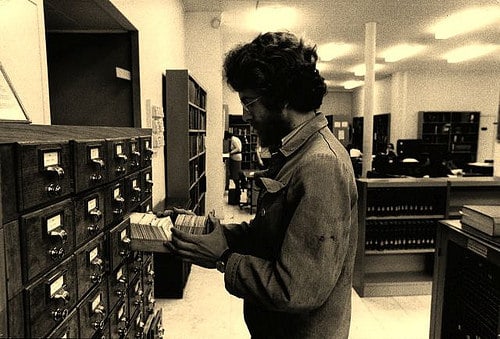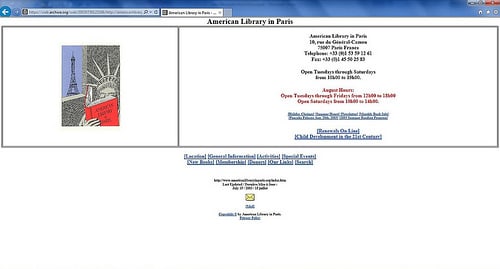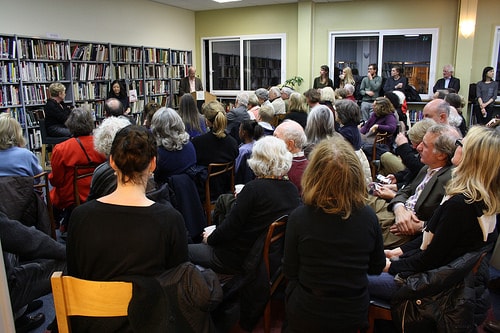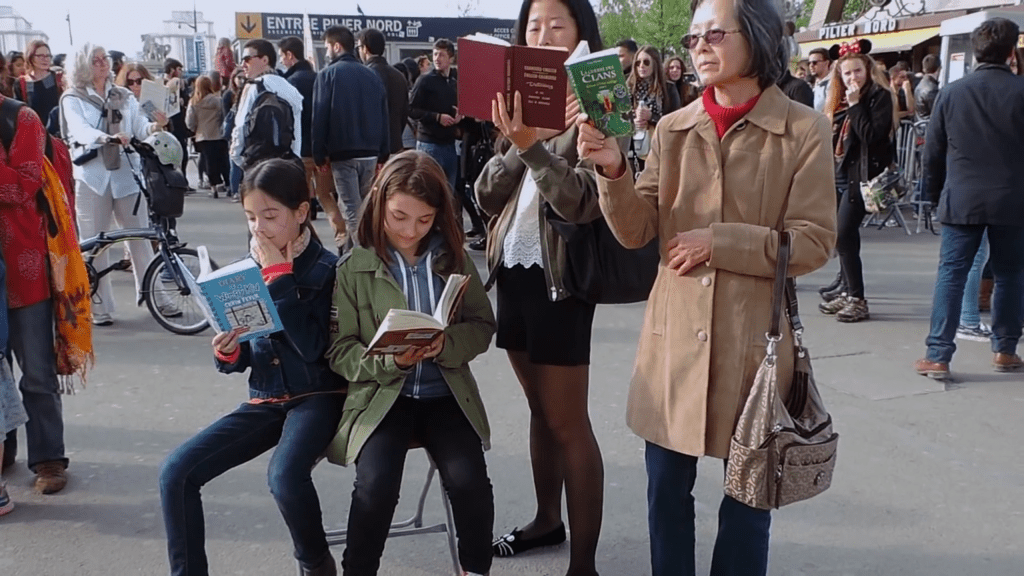Lending for 105 years: 1920–2025
The American Library in Paris was established in 1920 under the auspices of the American Library Association with a core collection of books and periodicals donated by American libraries to United States armed forces personnel serving their allies in World War I. The Library has grown since then into the largest English-language lending library on the European continent. It operates as a non-profit cultural association in France incorporated under the laws of Delaware.
In commemoration of our 100th anniversary in 2020, the Library created a comprehensive timeline of our remarkable history. The content of this timeline draws heavily from our archival collection and features photographs and correspondences that have never been shown to the public until now. The Library would like to acknowledge the interns who helped to make the timeline possible: Jean-Michel Lapointe, Lucy Lavabre, Julia Greider, and Caterina Stamou. We also thank the valuable contributions of the Médiathèque Françoise Sagan, the American University in Paris Library, the English-language Library in Angers, and the H.W. Wilson Foundation.
Timeline of the Library
Detailed History
During the closing years of World War I, when the United States entered the conflict, hundreds of American libraries launched the Library War Service, a massive project to send books to the doughboys fighting in the trenches – by the Armistice, nearly a million and a half books.
The American Library in Paris was founded in 1920 by the American Library Association and the Library of Congress with a core collection of those wartime books and a motto about the spirit of its creation: Atrum post bellum, ex libris lux: After the darkness of war, the light of books. Its charter promised to bring the best of American literature, culture, and library science, to readers in France. It soon found an imposing home at 10, rue de l’Elysée, the palatial former residence of the Papal Nuncio.
The leadership of the early Library was composed of a small group of American expatriates, notably Charles Seeger, father of the young American poet Alan Seeger (“I Have a Rendezvous with Death”), who had died in action in 1916 (and who would have become the uncle of the folk singer Pete Seeger). Among the first trustees of the Library was the expatriate American novelist Edith Wharton. Ernest Hemingway and Gertrude Stein, early patrons of the Library, contributed articles to the Library’s periodical, Ex Libris, which is still published today as a quarterly newsletter. Thornton Wilder and Archibald MacLeish borrowed our books. Stephen Vincent Benét wrote “John Brown’s Body” (1928) at the Library. Sylvia Beach donated books from her lending library when she shuttered Shakespeare & Co. in 1941.
The Library’s continuing role as a bridge between the United States and France was apparent at the beginning. The French president, Raymond Poincaré, along with French military leaders such as Joffre, Foch, and Lyautey, were present when the Library was formally inaugurated. An early member of the board was Clara Longworth de Chambrun, member of a prominent Cincinnati political family and sister of the U.S. Speaker of the House of Representatives, Nicholas Longworth.
A succession of talented American librarians directed the Library through the difficult years of the Depression, when the first evening author programs drew such French literary luminaries as André Gide, André Maurois, Princess Bonaparte, and Colette for readings. Financial difficulties ultimately drove the Library to new premises on the rue de Téhéran in 1936.
With the coming of World War II, the occupation of France by the Nazi regime, and the deepening threats to French Jews, Library director Dorothy Reeder and her staff and volunteers provided heroic service by operating an underground, and potentially dangerous, book-lending service to Jewish members barred from libraries. One staff member, Boris Netchaeff, was shot by the Gestapo when he failed to raise his hands quickly enough during a surprise inspection.
When Reeder was sent home for her safety at the end of 1941, Countess de Chambrun rose to the occasion to lead the Library. In a classic Occupation paradox, the happenstance of her son’s marriage to the daughter of the Vichy prime minister, Pierre Laval, and her family’s other social and business connections ensured the Library a friend in high places. That, along with the pre-war esteem of German “Library Protector” Dr. Hermann Fuchs for Dorothy Reeder and the Library, granted the institution a near-exclusive right to keep its doors open and its collections largely uncensored throughout the war. A French diplomat later said the Library had been to occupied Paris “an open window on the free world.”
The Library prospered again in the postwar era as the United States took on a new role in the world, the expatriate community in Paris experienced regeneration, and a new wave of American writers came to Paris – and to the Library. Irwin Shaw, James Jones, Mary McCarthy, Art Buchwald, Richard Wright, and Samuel Beckett were active members during a heady period of growth and expansion. During these early Cold War years, American government funds made possible the establishment of a dozen provincial branches of the American Library in Paris, even one in the Latin Quarter. The Library moved to the Champs-Elysées in 1952. It was at that address that Director Ian Forbes Fraser barred the door to a high-profile visit from Roy Cohn and David Schine, Senator Joseph McCarthy’s notorious anti-Communist investigators, who were touring Europe in search of “Red” books in American libraries.
The Library purchased its current premises, two blocks from the Seine and two blocks from the Eiffel Tower, in 1964 – making way on the Champs-Elysées for the Publicis monument, Le Drugstore. On the rue du Général Camou, the Library helped to nurture the growth of the American College of Paris’s fledgling library. Today, as part of the American University in Paris, that library is our neighbor. The branch libraries ended their connections to the American Library in Paris in the 1990s; three survive under new local partnerships.
Since the turn of the century, the Library has dramatically expanded its digital collections, its programming, and its reach into the English-speaking communities of Paris. In 2016, the Library underwent its first significant renovation in a half-century, creating new spaces for programming, study, and interaction. The Library celebrates its 100th anniversary in 2020, looking to build on the remarkable heritage of its first century.

